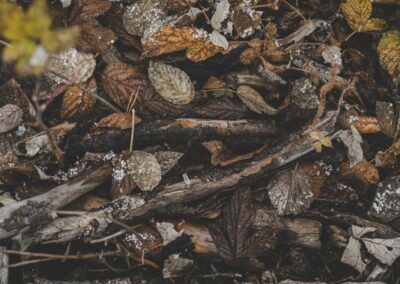Every year in January, the gardening calendar resets back to zero for a fresh start! Isn’t that nice? You have all the luxury to plan out everything for the rest of the year anew!
January may not be the best month for gardening, but it’s a great month to sit back, do some planning, and catch up with odd winter gardening tasks.
1. What to harvest in January
- Parsnips, endive, and leeks: Store them moist and cold, like in a perforated plastic bag in the fridge.
- Winter cabbages: Trim outer leaves and cut back the stalk to about 6”, then pop in the fridge. Without a fridge, wrap in newspaper and keep somewhere cool.
- Cauliflower: Cut into florets and store in a plastic bag in the fridge. Or keep the whole unwashed head in the fridge, and it should last up to two weeks.
- Winter salad and leafy greens, like kale: Wash and spin dry, then store in a plastic bag or glass container lined with a paper or tea towel to absorb extra moisture.
- Brussel sprouts: Keep them on the stem for as long as you need. Start from the bottom and eat your way up to the top.
2. What to plant in January
Absolutely nothing. January is when you get to sit back and plan your garden from the comfort of your living room, while the elements are having a go at it outside.
3. Plan next season’s garden
If you haven’t started planning, check this article for the list of garden planner apps (some are free). Planning carefully will increase the chance of your plants’ survival…because let’s admit it, not everyone has a green thumb.
Once you’ve decided what to grow in your garden this year, you can start looking through seed catalogs and browsing seed-store websites. Don’t wait too long to buy your seeds though — it’ll be time to plant them before you know it!
Shopping for seeds is a pleasure that most every gardener enjoys… Just the thought of being able to grow your own food is enough to brighten up everyone’s mood during these dark winter days!
4. Repair winter damage
Had any snowfall? Remove any dense, wet snow from the roof of your cold frames, greenhouse, and solar panels if you have them. Don’t wait days or even hours to do this; depending on the amount of snowfall, heavy snow can cause damage pretty fast.
Take measures to prevent freezing pipes in your garden watering system. Better safe than sorry!
5. Give your trees and shrubs a thorough inspection
Much like any other living thing, trees and shrubs also need a regular check-up — especially during the cold weather when they’re most susceptible to damage. Ideally, inspection should occur every season, but if it’s not feasible, it should be done at least annually. Not only does it keep your trees safe, but it also prevents property and personal damage.
You can get a professional to do the inspection so that whatever issues are identified, you can address them properly. If you want the DIY route, make sure you do it correctly. Here’s a guide that you can use as a reference.
After examining your trees and shrubs and you’ve picked out the decaying branches, the next best thing to do is to trim them. Some people think that pruning is just for aesthetic purposes… Yes, it’s one of the reasons to prune, but it’s more than just that.
Pruning also helps encourage fruit or flower production, strengthens the tree structure, and mitigates the risk of falling branches. You wouldn’t want your tree to cause damage to someone or to your property, that’s for sure!
When pruning, it’s essential to use the correct tool to avoid any harm to your plant and even to yourself.
6. Feed the birds
If birds need any help from humans, it would be during the winter when they struggle to find food and fresh water. Most likely, by the time January rolls around, most seeds are already depleted.
If it’s not too much of a burden to you, why not extend your hand to these lovely creatures and provide food for them? Humanity doesn’t cost anything, so when there’s a chance, let’s be more humane.
Besides, it’s a refreshing view to see birds enjoying themselves in your backyard. Not sure what to feed them? Refer to this article. Place the bird feeder in an area where cats and squirrels can’t reach or better yet, hang it in one of your trees. Check this easy-to-fill and easy-to-clean feeder from Amazon.
7. Feed your compost
As you continue to prune decaying branches and leaves, add both of these to your compost bin or heap. There’s no good reason to stop composting regardless of the season and climate. It’s good for both the environment and the economy.
8. Rest and Relax
January gardening is your gardening rest and recuperation time — take advantage of it by kicking back and preparing your garden for the following year. Have fun in the process of buying seeds and sharing ideas with friends. Best of all, enjoy stews and fresh salads with all of your delectable winter vegetables.












0 Comments